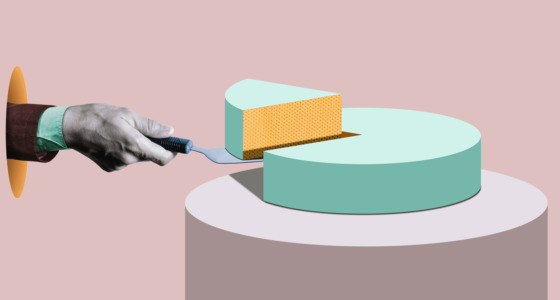As an individual consumer, you have likely experienced the law of diminishing marginal utility in everyday life without realizing the economic principle at work. The law of diminishing marginal utility states that as a consumer consumes more and more units of the same good or service, the satisfaction or utility gained from each additional unit decreases. In other words, the first unit consumed provides the greatest marginal utility, satisfaction, or benefit. Each subsequent unit provides less additional utility or satisfaction. At some point, the marginal utility of the good or service is nearly zero or may even become negative.What Is the Law of Diminishing Marginal Utility?The law of diminishing marginal utility states that as a consumer consumes more of a good or service, the marginal utility gained from each additional unit declines. In other words, the more you have of something, the less additional satisfaction you get from having one more unit of it.Here is an example of the law of diminishing marginal utility: the first slice of pizza you eat provides a high amount of utility or satisfaction. The second slice still gives you utility but not as much as the first. By the time you get to the fifth or sixth slice, the additional utility from one more slice is small. Your desire for more pizza has diminished.The law of diminishing marginal utility assumes that:
Utility can be measured and compared.Consumers act rationally by weighing additional utility versus cost.Only one variable is changing (e.g., consuming more of the same product).
This economic law applies to diverse goods and services. For example, the joy from the first chocolate bar may be substantial but declines with each additional bar. The thrill from the first roller coaster ride diminishes after multiple rides. The elation upon buying a new car lessens when purchasing a second or third car.In summary, the law of diminishing marginal utility means that with increased consumption of a good, the satisfaction or enjoyment gained from additional units will decline. Consumers gain the most utility from the initial units of a product and less from subsequent units. Businesses and marketers must understand this concept to serve customers and develop pricing strategies effectively. Using this economic principle, they can maximize customer satisfaction and company profits.Key Assumptions of the Law of Diminishing Marginal UtilityTo explain the law of diminishing marginal utility, three key assumptions must be considered:Scarcity of ResourcesFor the law to apply, the resource in question must be scarce, meaning limited or fixed in supply. If a resource were infinite, the marginal utility would not diminish. With a scarce resource, consuming more of it means less is available for other uses.Rational ConsumerThe law assumes that consumers are rational and aim to maximize their total utility. As rational actor seeks to fulfill their needs and wants, they will consume resources until the marginal utility gained equals the marginal cost. Beyond that point, the costs outweigh the benefits.Constant Marginal CostFor the law to hold, the marginal cost of the resource must remain constant as more units are consumed. If marginal cost were increasing, the rational consumer would not continue consuming up to the point of diminishing marginal utility. The marginal cost must be flat or fixed for the pattern of diminishing marginal utility to emerge.In summary, the three key assumptions – scarcity of resources, rational consumers seeking to maximize utility, and constant marginal costs – must be present for the law of diminishing marginal utility to apply. When these conditions are met, consuming additional units of a resource will provide less and less extra utility or satisfaction. The marginal utility declines as more of the scarce resource is consumed.Example of the Law of Diminishing Marginal UtilityThe law of diminishing marginal utility states that as a consumer consumes more and more units of a product, the satisfaction or utility gained from each additional unit consumed diminishes. It is known as the diminishing marginal utility.For example, the first slice of pizza you eat provides a high level of satisfaction as you are hungry. However, the satisfaction gained from consuming the second or third slice is lower as you become full. It illustrates the law of diminishing marginal utility – the additional utility from each additional slice of pizza consumed diminishes.Some key assumptions of the law of diminishing marginal utility:The units of commodities consumed are homogeneous (identical). If the units are heterogeneous (different), the law may not apply.The consumption is continuous. The law may not apply if there are long time intervals between consumption.No new substitutes or complements become available during the act of consumption. The availability of substitutes or complements can alter the level of satisfaction and disrupt the law.Consumer’s tastes and preferences remain unchanged. Any change in tastes or preferences can affect the level of satisfaction gained and prevent the law from applying.The income level of the consumer is constant. A change in income can also change the level of satisfaction derived from each unit consumed.
In summary, the law of diminishing marginal utility explains that as a consumer consumes more and more units of a product, the satisfaction or utility gained from each additional unit consumed decreases. It is due to the fact that as a consumer consumes more, the desire for the product is satisfied, and the marginal utility diminishes.Why Diminishing Marginal Utility Matters in EconomicsThe law of diminishing marginal utility explains why the satisfaction or usefulness gained from consuming an additional unit of a good or service decreases with each unit consumed. This concept is important in economics because it shows why consumers make the choices they do and how prices are determined in the market.As a consumer, you experience diminishing marginal utility when the benefit or satisfaction from consuming one more unit of something decreases with each additional unit. For example, the first slice of pizza may taste amazing, and the second slice is still good, but by the fifth or sixth slice, the satisfaction has decreased significantly. Your desire or need for that food has been partially satisfied.This law also assumes that goods provide utility, defined as the satisfaction or happiness gained from consuming a good or service. Utility is subjective and difficult to measure directly. However, economists can infer utility from the choices people make. As utility from a good decreases with each additional unit consumed, the price a consumer is willing to pay for that next unit also decreases.Why Diminishing Marginal Utility Matters?The law of diminishing marginal utility helps explain consumer behavior and demand in the market. As consumers gain more of a particular item, the utility or benefit from additional units decreases. Therefore, the amount consumers are willing and able to pay also decreases. Producers and suppliers need to understand this relationship to properly price goods and services. Consumers will likely not buy or choose alternative options if they charge too much for additional units.This principle also shows why consumers diversify and choose a variety of goods and services to consume. By consuming different products, consumers can maximize their total utility. Consumers can gain moderate utility from various sources rather than gaining little satisfaction from consuming too much of one item. Diversification helps ensure needs and wants stay satisfied.In summary, the law of diminishing marginal utility explains how the usefulness or satisfaction gained from consuming an additional unit of a good or service decreases with more consumption. This concept helps demonstrate consumer behavior, demand, and pricing in the market. By understanding how utility changes with the amount consumed, economists gain insight into why people make the choices they do.How Firms Use the Principle of Diminishing Marginal UtilityThe law of diminishing marginal utility states that as a consumer consumes more and more of a good or service, the utility or satisfaction gained from each additional unit declines. For firms, this means that, at some point, producing additional units of a good or service will lead to diminishing marginal returns.How Firms Apply This PrincipleFirms can utilize the law of diminishing marginal utility by adjusting production to optimize profits and meet consumer demand. Consumers’ willingness to pay for additional units decreases as they gain more of a product. To maximize profits, firms will stop producing at the output level, where marginal cost equals marginal revenue.For example, a bakery may produce 200 cupcakes a day because, after that point, the marginal cost to produce additional cupcakes exceeds the marginal revenue from selling more. If the bakery continued increasing output, the additional cupcakes produced and sold would generate less revenue and profit. The resources used to produce those extra cupcakes could have been better utilized to produce a different product.Another strategy is for firms to introduce product variants, sizes, or complementary goods to provide more utility for consumers. A fast food chain may offer small, medium, and large drink sizes to satisfy customers with different thirst levels and willingness to pay. An electronics company may offer basic and premium versions of a product at different price points.Firms also use diminishing marginal utility by limiting availability or raising prices during high-demand periods. When a new smartphone model is released, or tickets go on sale for a music festival, limited initial availability and higher prices allow firms to maximize revenue from consumers with the highest willingness to pay. Over time, as demand diminishes and marginal utility decreases for additional units, firms may lower prices or increase availability.In summary, firms can apply the law of diminishing marginal utility by adjusting output and pricing to match the decreasing satisfaction gained by consumers from additional units of a product. Optimizing production and profits requires finding the right balance between supply and demand.ConclusionThe law of diminishing marginal utility is an important economic concept that explains how the additional satisfaction gained from consuming one more unit of a good or service will decrease with each additional unit consumed. As you continue to consume a product, the additional utility you gain from each additional unit diminishes. This fundamental law of economics helps explain consumer behavior and demand. The next time you go to make a purchasing decision, keep the law of diminishing marginal utility in mind. The satisfaction and happiness you will gain from buying one more of something is likely not as great as the satisfaction from the initial units.









